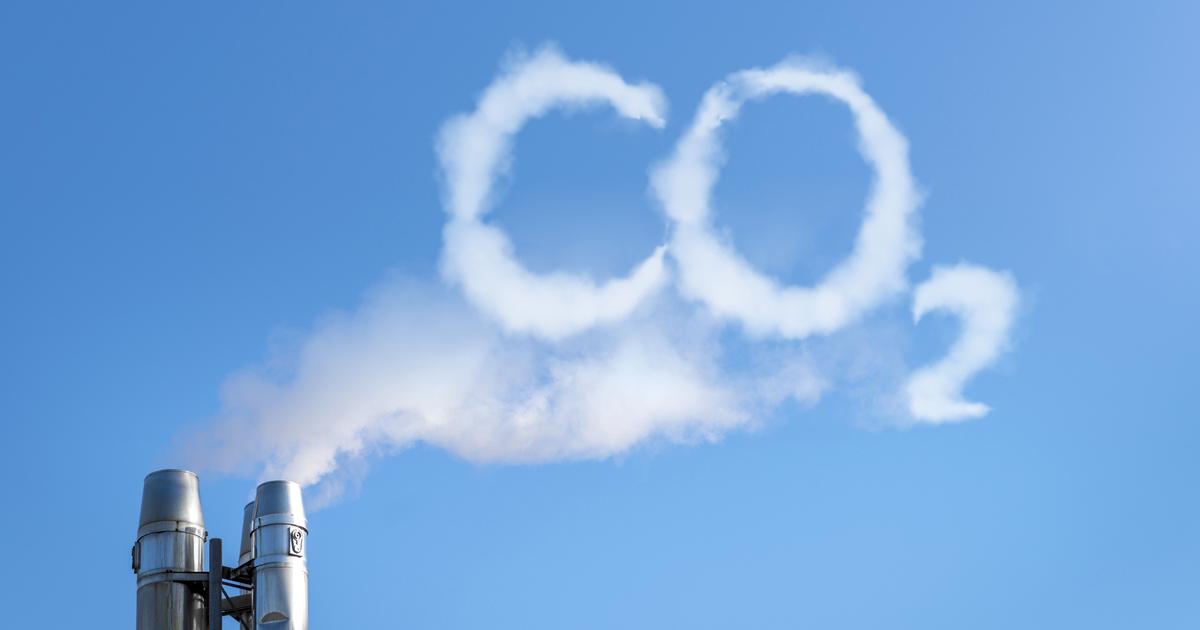Enlarge image
Neurath lignite power plant near Grevenbroich
Photo: Jochen Tack / imago images
In a sense, the environment is one of the corona winners: the measures taken to contain the virus resulted in a downright historic decline in carbon dioxide emissions in 2020. People stayed at home instead of driving to work. Airplanes were on the ground. In some cases, even industrial production was shut down. According to a study from last year, global emissions of greenhouse gases fell at times by 17 percent compared to the usual daily value of around 100 million tons. In Germany at the beginning of April there was even 26 percent less CO₂ than usual.
As a result, Germany not only achieved its climate protection targets for 2020, but also exceeded them, as the Agora Energiewende think tank announced at the beginning of the year.
But the sigh of relief was only short-lived, because at least the first balance that Agora is now drawing for the current year shows a trend reversal.
Accordingly, carbon dioxide emissions in the first quarter of 2021 rose slightly by two percent compared to the previous year.
And that, although the measures at the beginning of the year included, for example, week-long closings of shops and schools as well as universities or home office regulations in many companies.
The colder winter with a higher demand for heating oil is also to blame for the increase, according to a report for which the experts made calculations based on the quarterly report of the AG Energiebilanzen.
In addition, the proportion of electricity generated by wind turbines has declined - as a result, more electricity, which is more emission-intensive, was generated from coal and natural gas power plants.
This leads to an increase in CO₂ emissions of three million tons compared to the same period in 2020 to a total of 169 million tons.
In the case of primary energy consumption, which also includes upstream processes such as the extraction, transport or processing of raw materials, the proportion of the individual energy carriers increased by 26 percent for lignite, nine percent for hard coal and eleven percent for natural gas
However, Agora’s calculations have so far disregarded emissions from industrial processes and agriculture or land use changes; no data are yet available for this.
The energy-related CO2 emissions are anyway the most important for consideration.
In 2019, for example, they accounted for around 85 percent of total greenhouse gas emissions.
"It is unlikely that other sectors will weaken the rise in energy emissions," says Philipp Litz from Agora to SPIEGEL.
“The emission-intensive industries produced at pre-crisis level again in the first quarter, despite the corona restrictions,” said the energy expert.
No significant reductions in emissions are to be expected in agriculture either.
The decline in electricity from wind energy can also be explained by weather-related fluctuations.
At the beginning of last year, storms caused a lot of wind power, at that time the yield was above average - now it has fallen again.
Overall, electricity generation from renewable energies from January to March 2021 was 23 percent lower than in the previous year.
As a result, despite the current high CO2 price, more electricity from fossil fuels was used again.
»The fact that CO2 emissions rose again in the spring despite the Corona measures is an alarming signal.
The failure to protect the climate in recent years is now fully reflected in the balance sheet, especially when it comes to wind expansion and the building sector, ”says Agora Director Patrick Graichen.
Nevertheless, the measures taken to contain the corona pandemic have left measurable traces.
In 2021, too, people were less likely to travel by car or plane, and savings were also made in other areas of mobility.
As a result, fewer fuels such as gasoline, diesel and kerosene, which are responsible for CO2 emissions, were used.
Hamster purchases of heating oil from last year were also noticeable, which can be explained by the low oil price.
In the first quarter of 2021, for example, mineral oil consumption was 19 percent lower than in the first quarter of 2020. Without taking these special effects into account, CO2 emissions would have risen by ten percent to 183 million tons.







